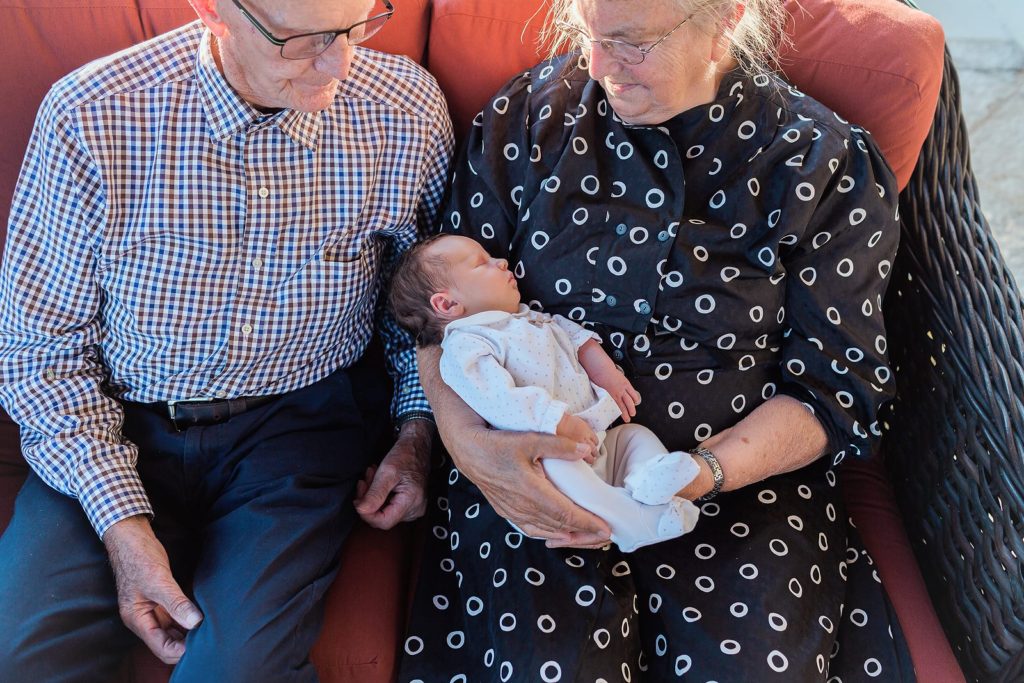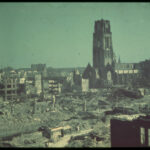By Jonathon Van Maren
In the weeks since my daughter Charlotte was born, I’ve tried to write a column about her arrival several times. Writing about the moment we discovered her existence was easy, but when our beautiful daughter officially arrived, my thoughts log-jammed. How could I possibly explain the feeling of seeing the doctor hand our little girl to my wife for the first time, and the look of complete awe on Charmaine’s face? Or seeing my parents joyfully meet their second grandchild, their first granddaughter? Or when I talked quietly to Charlotte when we were alone in the hospital suite for awhile, and she stopped crying because she recognized my voice?
These things are in many ways perfectly ordinary—I’m sure millions of new fathers and mothers can conjure up their own similar experiences easily. Meeting a tiny stranger who is yet so obviously yours, a little person that you don’t know yet but already love—it is, in a word, wonderful. Terrifying, too. But still wonderful.
I caught myself wondering, as I often do, about the kind of world our little daughter would grow up in. Considering that both my wife and I work in the pro-life movement and my first book, The Culture War, detailed state of society and the disturbing trajectory we’re currently on, I have a pretty good idea of what it looks like right now. But what will it look like when Charlotte is my age? Things can change so quickly. After all, I was born in Washington State during the last year of Ronald Reagan’s presidency. Now, the Republican president is Donald J. Trump. I don’t think anybody could have predicted that.
But nothing illustrated to me how much can change in a lifetime as much as a beautiful sunny evening last week when our little daughter met my three living grandparents, who were all visiting from British Columbia. My maternal grandmother, Oma den Bok, is over eighty years old. My paternal grandparents, Opa and Oma Van Maren, are over ninety. To them, much of the 20th century is not yet history—it is still memory. The changes they have seen make the current upheavals seem tiny in comparison.
The conversation began when Charlotte squeaked a bit, waved her arms indignantly, and Dad popped her soother in her mouth. “Kids are so spoiled these days,” he joked. Opa smiled and chuckled. “We didn’t even get water in the house until I was five,” he said. “It was 1926. And in 1929, the rivers froze over and my dad could walk right across the river.” My grandmother interrupted from across the patio. “Yes, that was in March of ’29! My dad always talked about that winter, when everything froze.” She paused and nodded. “What do you remember of the war?”
The war she was referring to, of course, was the Second World War. Each of my grandparents remember the Nazi invasion of the Netherlands vividly. Oma den Bok remembers waking up on the morning of May 14, 1940 to see the smoke and flames of Rotterdam rising in the distance. She had been shopping in the city with her mother only the previous day, and most of the city—including the department store they’d just bought shoes at—was leveled by Luftwaffe bombers. My Oma Van Maren also saw the Rotterdam Blitz, but from the opposite direction. Although the events took place 77 years ago, they can still conjure up the images as if it were yesterday.
Opa Van Maren also remembers those dark days. When the Nazis began their sweeps of the Dutch countryside, searching for young men to send to Germany as slave labor, his younger brother Dirk was one of those taken. Dirk hated to talk about it afterwards. He did recall the feelings of terror when Allied bombers unleashed their payloads over the factories, with he and the other prisoners locked in the basement. He would lean up against the concrete wall, and as the bombs fell, the walls would buck and heave. When the war ended and Dirk came limping home on foot, he weighed less than ninety pounds. For years afterwards, he would time his bike rides to ensure that he wouldn’t pass under a railway trestle when a train was going overhead—the rumbling would cause flashbacks of those sweat-soaked moments locked underground when it seemed as if the world was ending around him.
Here Oma den Bok broke in. The Germans had billeted soldiers in her family’s home, which was an especially scary experience because they frequently hid “onder-duikers,” which translates to “divers”—those who had to be hidden from the Nazis and “dove under” the surface of society, including Jews, Dutchmen who had been called up for labor in Germany, and Allied pilots shot down in the Netherlands. Two of the soldiers, she recalled, had stolen chickens at the neighbors and slaughtered them in the house just after her mother had finished spring cleaning. They’d made a bloody mess of everything.
Listening to the conversation as four generations sipped coffee on a sunny patio in Southern Ontario was in some ways surreal. Pictures and news footage were still emanating out of the aftermath of the Charlottesville riots, where white supremacists waved the Nazi flag that my grandparents could still remember so well, borne by goose-stepping men bringing murder and misery to their little country. Oma den Bok still remembers the reprisal executions after the Nazi-appointed mayor of her city was assassinated by the Resistance. The Germans pulled the first ten Dutchmen pedaling by off their bikes, lined them up on the side of the road, and gunned them down. One teenage boy managed to scream “Moord!”—murder—at the top of his lungs before he died. In Oma’s memory, his cry echoed for miles around.
It’s easy to see the horrifying events of the 20th century as black-and-white history, but some of those who saw everything unfold in vivid, blood-red color are still with us. I’ve spoken with a man who survived six concentration camps and witnessed the Warsaw Ghetto Uprising. I’ve talked with a woman who played with Anne Frank on the streets of Amsterdam as a little girl. I’ve interviewed an old man who still remembered vividly the man who saved his life, Oskar Schindler. I even met Ted “Dutch” Van Kirk, the navigator on the Enola Gay the day they dropped Little Boy over Hiroshima, ending the Second World War and ushering in the Cold War.
It is so essential that we understand and connect with our history because history is closer to us than we think. A significant portion of the current generation seems to believe that we are now enlightened and cannot make the mistakes of our ancestors, while simultaneously refusing to learn from their wisdom. But the tragic and bloody events of the Past that created our Present did not happen that long ago. The last veteran of the First World War died in 2012, but I saw some of them in the first Remembrance Day ceremonies my parents took me to. My paternal grandparents came to North America in 1953, but it would be another three years, in 1956, before the last veteran of the American Civil War as well as the last eye-witness to Abraham Lincoln’s assassination would pass away. These things happened, historically speaking, just yesterday.
It was a beautiful moment for me to see my daughter with her great-grandparents as they reminisced on their memories of events that she will only know as history. At one point, my Oma Van Maren leaned over her newest great-granddaughter and gave a luminous smile, the kind that squinches your eyes nearly shut and radiates with love. It was a smile that our family knows so well, a smile that Oma has given her eleven children, her fifty-eight grandchildren, and now over one hundred great-grandchildren. Each new arrival is precious, and Oma loves each and every one of them.
In this smile, from a ninety-one-year-old woman to a baby girl not yet three weeks old from birth, is something that captures the essential nature of family and of civilization itself. The family, much scorned, torn up, and redefined in a culture unmoored from the Christian wisdom of our ancestors, makes up the building blocks of our society. A love that is deep enough and powerful enough to encompass scores of children and grandchildren, a love that has put others first for decades and springs from the soil of profound sacrifice and selflessness—that is the glue that holds a society together and allows civilizations to prosper.
Untold thousands across the West have now been denied such roots, because the institution of the family has been abandoned as repressive. Selfishness has been liberated, and a radical individualism that ravages both sides of the political spectrum has severed ties to the past and cast aside tradition as useless superstition. As division and upheaval dominate the headlines, progressive pundits dither and wonder where this new and nasty tribalism has come from, not realizing that something had to replace the family unit they destroyed. Those of us who were born into multi-generational, close-knit families are far less likely to be attracted to ugly resurrected ideologies because we already have our tribe, one made up of parents, siblings, cousins, uncles and aunts. Some of us even have grandparents who can tell us, face to face, what really happened the last time foolish people decided to unite behind these ideologies.
Everyone needs to belong somewhere, and the destruction of the family unit is partially responsible for the identity politics that arose as our society reorganized. A generation of men and women who grew up in the social rubble bequeathed to them by the Baby Boomers are angry, and the tribes they are forming are clashing on streets across the continent. It is time for our society to realize that the solution is something they threw away, something that must be put forward again. Family can be maligned and meaningful traditions can be trashed, but the fundamental human need to belong somewhere will always rebel against “progress.” For tradition, as G.K. Chesterton once put it, is so strong “that later generations will dream of what they have never seen.”
My little daughter was born into a family with a rich legacy of love, nurtured over generations by men and women who were willing to sacrifice for their children and put family first. I pray that I will be able to live up to their example–and that our society will one day remember the heritage it abandoned and realize that one solution to the strife that plagues us can begin when we decide not to spurn those who went before us, but to instead emulate their example.









Beautifully written article and so full of wisdom. If only we will listen and take time to absorb all that is being shared. God’s blessings on your entire family and especially your little baby girl.
Thank you, Linda!
I find it interesting that you make a point of saying “It is so essential that we understand and connect with our history because history is closer to us than we think” yet your previous articles on the Charlottesville tragedy seem to contradict that. You want us to remember WWI and WWII, but not our Revolution and the Civil War – as if those earlier wars do not teach us anything? I would encourage you to read http://www.dailywire.com/news/20061/schaeffer-monuments-founders-and-memories-brad-schaeffer?utm_source=facebook&utm_medium=social&utm_content=062316-news&utm_campaign=benshapiro and reflect on the statement “[O]ur Revolution should always be remembered as the story of a new birth of dignity for mankind and that first most courageous step taken on the long road to freedom on behalf of generations to come. Yes, many of the Revolutionaries practiced slavery. But they also laid the very moral foundations for its eventual eradication.”
My previous articles–most notably my article on the origins of the Civil War, which is explicitly about remembering our history accurately, and my column on how both flags–the Swastika and the Hammer and Sickle–were also about remembering what historical symbols stood for. In fact, most of the discussion surrounding Confederate statues are explicitly about how we remember our history. Where we’d agree, I suspect, is that the vandals who are spray-painting, vandalizing, and pulling statues down should be prosecuted. The right path forward should be charted by a reasonable discussion.